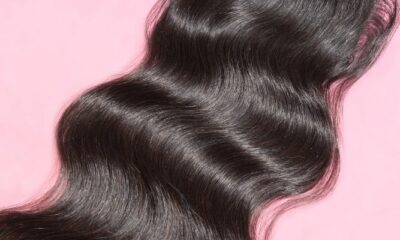Blog
Learn Acrylic Painting Color Theory Inside and Out
Artists favor acrylic painting due to its adaptability, quick drying time, and vibrant hues. To create stunning works of art, one must grasp the basic principles of color theory.
Color theory is especially important in acrylic painting because the medium is highly pigmented and can be mixed to produce an infinite range of hues. By comprehending the fundamentals of color theory, artists can make more informed decisions regarding which colors to use and how to combine them to accomplish the desired effect.
A Guide to the Color Theory of Acrylic Painting
The goal of studying color theory for acrylic painting is to produce aesthetically pleasing and harmonic paintings. The color wheel, its parts, and the rules of color mixing and color schemes must all be mastered. The color wheel is a useful visual aid for observing the connections between various hues. Standard color schemes include all 12 hues: red, yellow, and blue; orange, green, and purple; yellow-green, blue-green, blue-purple, red-orange, and yellow-orange; and the tertiary color combinations of these.
Paintings that successfully portray the appropriate mood and message require the artist to grasp color theory fully. Artists can use the concepts of color theory to mix colors skillfully, design good color schemes, and evoke specific feelings in viewers of their works of art.
Color Mixing Techniques
Understanding how to combine colors is essential to have a thorough understanding of color theory while working with acrylic paint. The following are some examples of common techniques for developing new colors:
Value and Intensity in Color Theory
A color’s value indicates how light or dark it is. A wide variety of tones and tints can be achieved by adding white or black to a hue. The term “intensity” describes how bright or dark a color is. A color’s vibrancy can be toned down by combining it with its complementary hue.
Creating New Colors From a Limited Palette
Color mixing is easier, and a more harmonious color scheme is achieved when only three or four colors are used (often the primary colors and white). You may make various secondary and tertiary colors by combining the primary colors.
Harmony and Contrast with Complementary Colors
Colors that reside on opposing sides of the color wheel are said to be complementary. They complement one another when put next, creating contrast and making both appear brighter. Muted, neutral shades can be achieved by combining complementary hues.
Making Color Adjustments
When black is added to a color, the result is a shade, while when white is added, the result is a tint. By gradually adding black or white to a color, one can create varying shades and tints of that color.
Making Use of a Color Wheel
A color mixing chart is a useful visual aid for visualizing the results of combining various hues. You can make a chart of all the various secondary and tertiary colors you can make with your limited palette by mixing each primary color with the other two primary colors.
Wet-palette Technique
Acrylic paints can be kept moist and pliable for longer periods of time with the help of a wet palette, which also makes them simpler to work with. When painting, having a wet palette facilitates easier blending and more seamless transitions between colors.
Acrylic Painting Color Schemes
A painting’s color scheme is the set of colors that the artist chooses to employ in the work. Acrylic painting allows for various color combinations, each producing a particular feeling. Some typical color combinations are as follows:
Monochromatic Color Scheme
Different shades of the same color are used in a monochromatic color scheme. The result is a more cohesive and beautiful artwork. Adding dimension and nuance to a design can be accomplished by employing varying tones and tints of a single color.
Analogous Color Scheme
An analogous color scheme consists of colors that are next to one another on the color wheel. Color schemes that are similar to one another are calming and reliable. Nearby colors on the color wheel complement one another because they tend to seem the same next to one another. It is not recommended to use these colors evenly when designing.
Complementary Color Scheme
Colors on opposite sides of the color wheel form a complementary color scheme. A picture in which complementary colors such as blue and orange are used is an example of this. When utilized together, complementary color schemes produce a striking contrast that can serve as a painting’s main point.
Triadic Color Scheme
The colors in a triadic color scheme are equally spaced around the color wheel. A picture with just three colors—say, red, yellow, and blue—would be said to have a triadic color scheme. The use of triads in color schemes imparts vitality and excitement.
Split-Complementary Color Scheme
In a split-complementary color scheme, the complementary colors of the base color and the accent color are used. A painting using a split-complementary color scheme might have a blue background with yellow-orange and red-orange accents. To achieve harmony and variety, split-complementary color schemes are used.
Conclusion
Understanding color theory in acrylic painting is crucial for achieving desirable and long-lasting results. Artists can convey feelings, add depth and intrigue, and accomplish their intended effect in their paintings by mastering the color wheel, color mixing techniques, and color schemes. In addition to the many other mediums, acrylic paintings are available on Memorialize Art. It will be a blast to look around and commission an original Acrylic painting.

 Blog2 years ago
Blog2 years ago8 Best Bulk and Mass Emails Software for Email Blast

 Blog2 years ago
Blog2 years ago50 Highest Paying Affiliate Programs to Earn Crazy Commission in 2023

 Blog2 years ago
Blog2 years agoWhat is Guest Blogging? And Why it’s Important for Your Blog

 Online Job2 years ago
Online Job2 years ago30 Legitimate Work from Home Jobs with No Startup Fee in 2023

 Entertainment2 years ago
Entertainment2 years agoGet to Know Yeh Rishta Kya Kehlata Hai Star Shivangi Joshi’s Net Worth

 Tech2 years ago
Tech2 years agoHow to Play Roblox on School Chromebook When Blocked 2023

 Blog2 years ago
Blog2 years ago10 Best Places to Design and Sell T-Shirts Online and Make Money

 lifestyle2 years ago
lifestyle2 years agoHow to Sell Your Hair for Money: A Step-by-Step Guide











